This post contains a referral link*
It’s almost a year since I put a first-time glucose monitor (CGM) on my arm and scanned it with the Veri app (formerly known as veristable).
This blog post will highlight the key insights I have learned in those 100 days. If you are more interested in Veri review, you can check it here.
Ps. You can use my referral link to get 30 dollars off from your first Veri sensor order or use code VSM-ILMOST
1. Why do I use CGM?
Let’s start with a fundamental question: why do I use CGM?
The short answer would be: because I want to live a long, happy life. Cardiovascular disease and cancer account for two-thirds of all deaths in the US [1], and type 2 diabetes are interrelated to both of these, meaning with type 2 diabetes, you have a higher chance of getting a cardiovascular disease or cancer [2] [3].
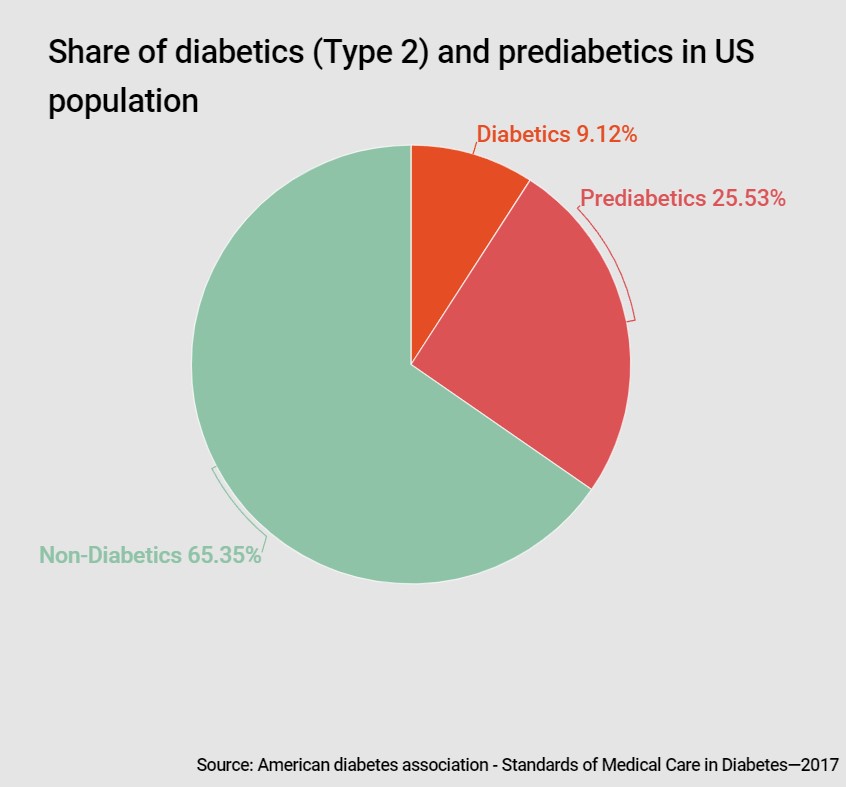
But type 2 diabetes risk factors are high BMI and an inactive lifestyle. I’m a healthy athletic guy; why should I care?
Based on Promethease personal DNA report, I have genotype (G;G) on rs10830963. This means an increased risk for type 2 diabetes [4]. I did a comprehensive review about genetic testing, which you can read here.
In addition to this, I have a family history of type 2 diabetes. Obviously, the risk of getting it is higher if I were overweight (around 3,5-fold [5]). Still, type 2 diabetes is seen even when BMI is under 25, and that group actually has the highest risk of the dead according to one study [6].
To get a full picture of my metabolic health, I use a continuous glucose monitor for that:
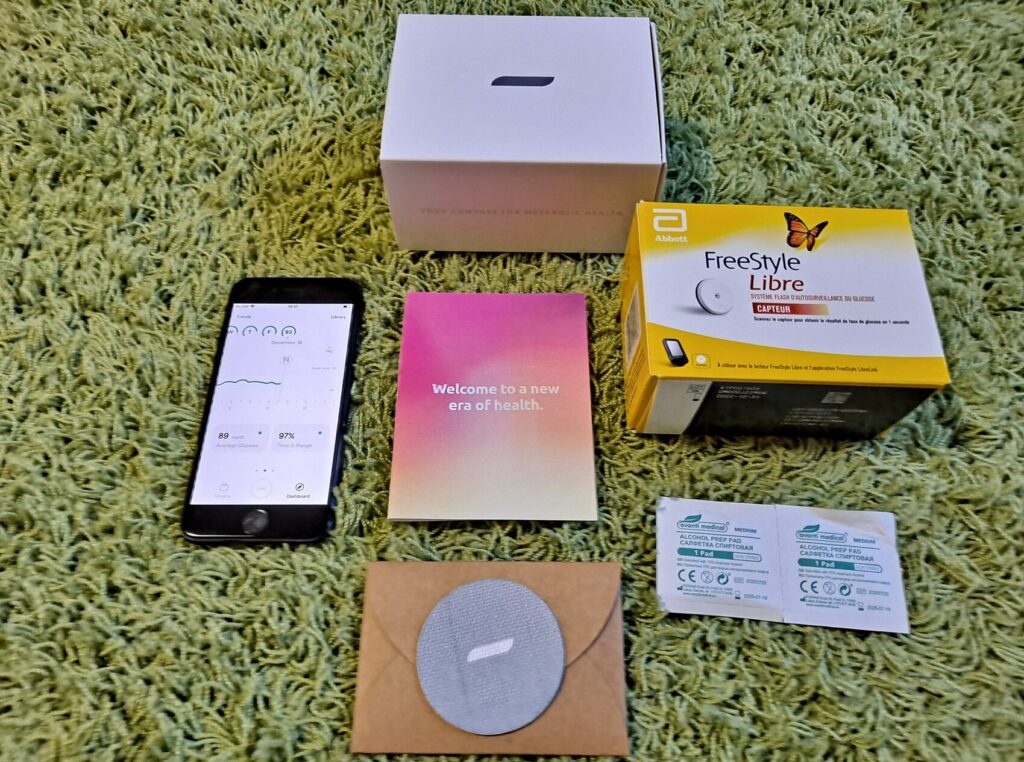
I’m also interested in comparing my values against overall population values. Here we can see in a significant prospective cohort study that fasting glucose tends to increase as we age, most rapidly from years 22 to 56 in men.
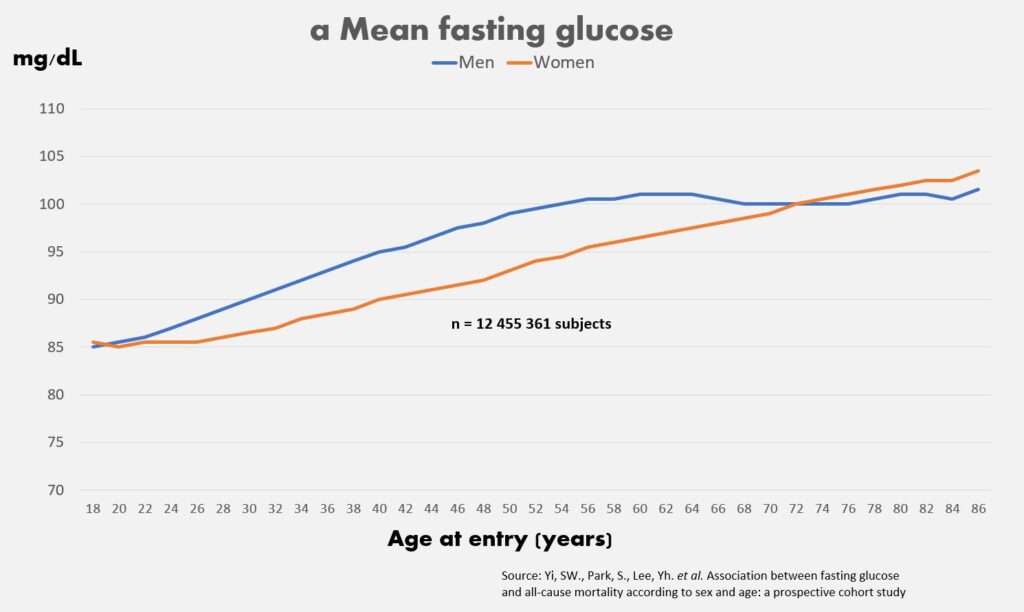
My goal is to keep my fasting glucose levels steady at optimal levels, even as I age.
You get fasting glucose from a standard blood test panel so one might ask; Isn’t that enough?
One study recruited 57 healthy participants to wear continuous glucose monitors. 25% of those participants had severe glucose variability, meaning that their glucose reached prediabetic or diabetic levels even though their standard blood test (fasting glucose, 2-hour glucose (OGTT), or HbA1c) were inside the normal range. [7]
The conclusion is that with CGM, you can detect possible “pre prediabetes.”
14 days of CGM is enough for any health-conscious user to get a good picture of current metabolic health, but it’s good to take new measurements if there are drastic changes in diet.
I did it for 100 days total to get a deep understanding of my metabolic health. I also love measuring myself with different health gadgets, so it’s part of my lifestyle.
Lastly, for transparency, I have an affiliate relationship with Veri, and I do earn commissions for referrals.
2. Overview of my blood sugar data in 100 days
The hundred days of measuring were not continuous. The measuring days are spread over the course of a year in short sequences to capture all of the four seasons.
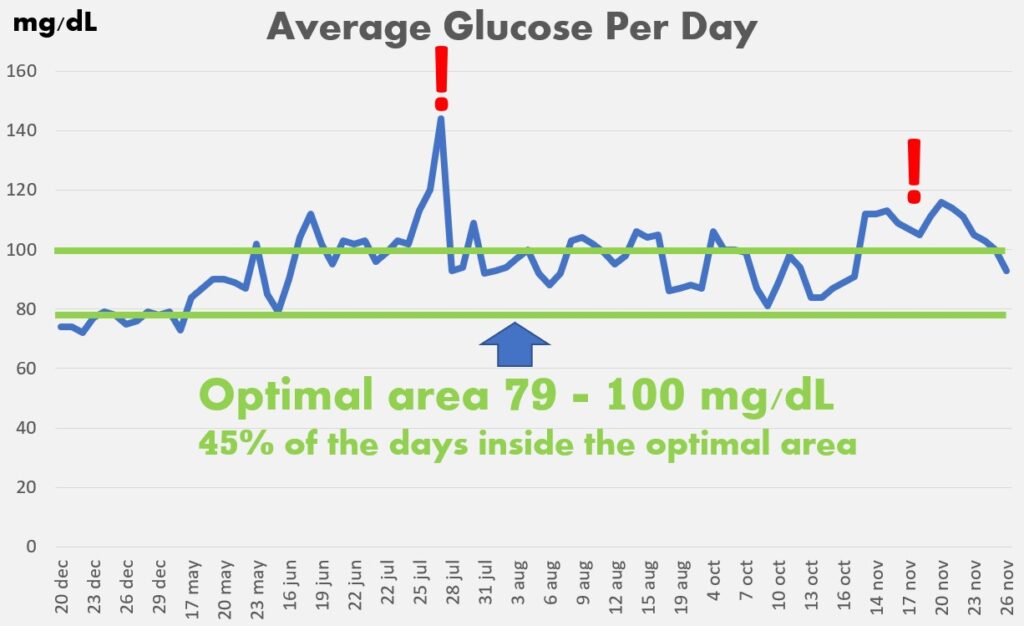
The optimal area (79-100 mg/dL) is based on Levels health’s excellent article [8].
The red exclamation mark highlights periods that I want to investigate further.
The first one is on July 27, with the highest spike. (More about this in section 4. Stress and blood sugar levels)
The second one was in November, when my average 24-hour blood sugar levels were above the optimal levels. (More about that in section 9)
Overall, we can see that there’s quite a lot of variation, from an average of 80 to over 100 mg/dL. The simplest explanation for this could be the day’s diet, but in reality, there are many different factors for this.
What about fasted morning glucose (07.00 am each day)? Can we see the same fluctuation there?
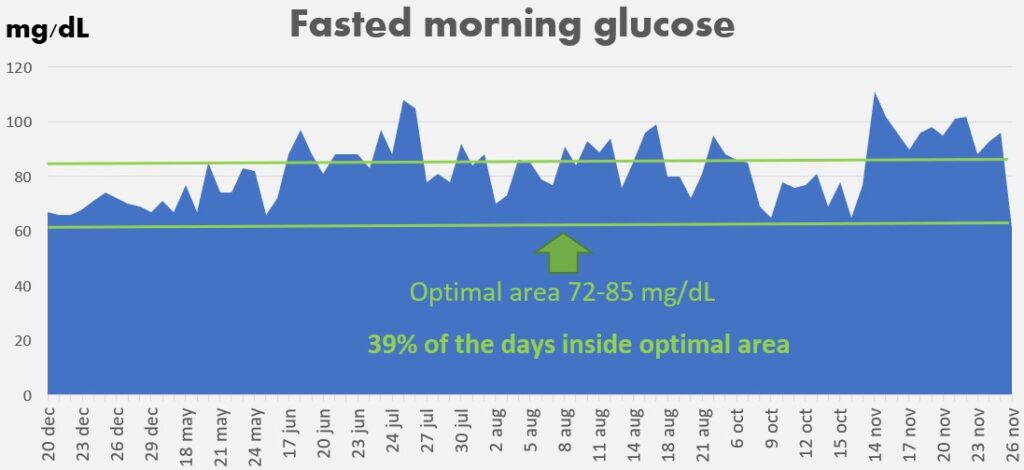
Only 39% of the days, my levels were within the optimal range. Like in avg glucose per day picture, we can see the worst period in November 2021.
In summer, I ate more freely, which was attributed to higher blood sugar levels. However, I have no explanation for November values. There’s room for improvement based on these two graphs, but we need to dig deeper to understand this better.
3. Sleep and blood sugar levels
There are so many questions about sleep and blood sugar levels.
First, it’s important to look whole 24 hours to understand how sleep and blood sugar are connected.
The picture below illustrates the mean blood sugar levels of healthy individuals (N=21) with similar BMI and age than me.
Mean blood sugar is lowest during the night, and there are three distinct spikes; breakfast (highest), lunch, and dinner.
What about my data?
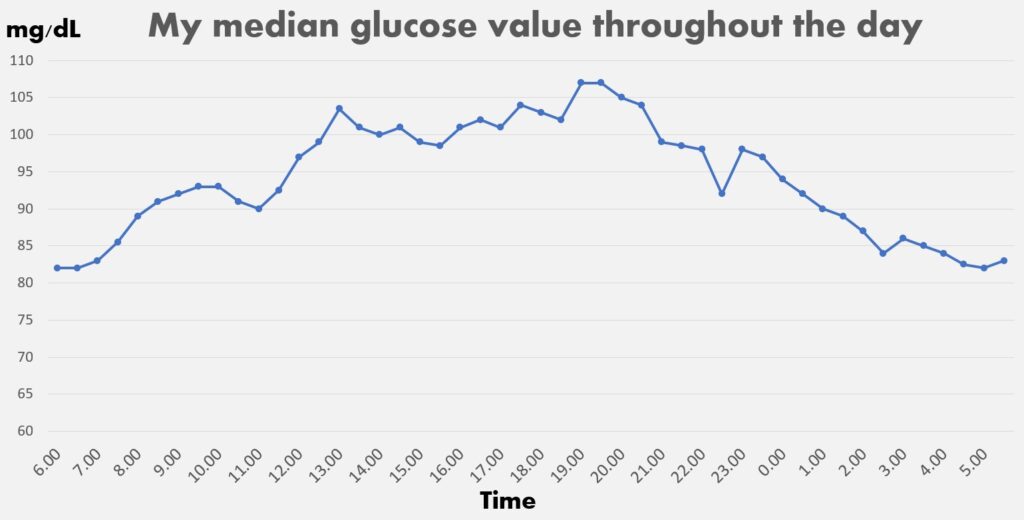
I’m a big proponent of intermittent fasting, meaning I usually skip breakfast. That’s why my morning glucose is much lower than in the study mentioned above.
There does not seem to be a significant drop between lunch and dinner compared to the study population. The most likely reason for this is a snack, exercise, and sometimes a sauna (done in that particular order). We can see that effect from 15.30 onwards.
What surprises me is that the baseline glucose level at night is reached late, around 02.00. However, there are fewer data points from 21.00 to 24.00 as Freestyle libre sensor can only save 8 hours of data without scanning, and according to Oura, I usually wake up a little bit before 8 am.
Then I found one good explanation for this. According to scientific studies, glucose levels are lowest during REM sleep [9]; this finding supports my typical sleep statistic in the graph above.
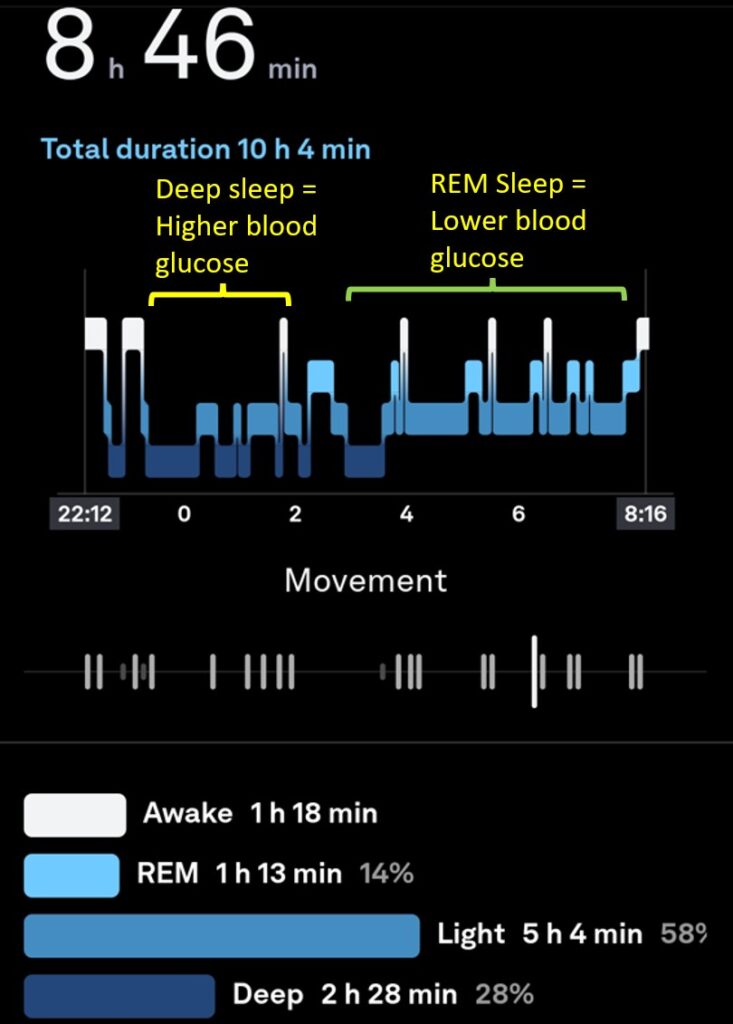
Oura sleep data comparison against Veri’s glucose data
Next, I will compare Oura’s sleep data against Veri’s glucose data to search for meaningful connections.
It is well known that poor sleep increases glucose levels [10], so it makes to compare Ouras sleep score to average daily glucose levels.
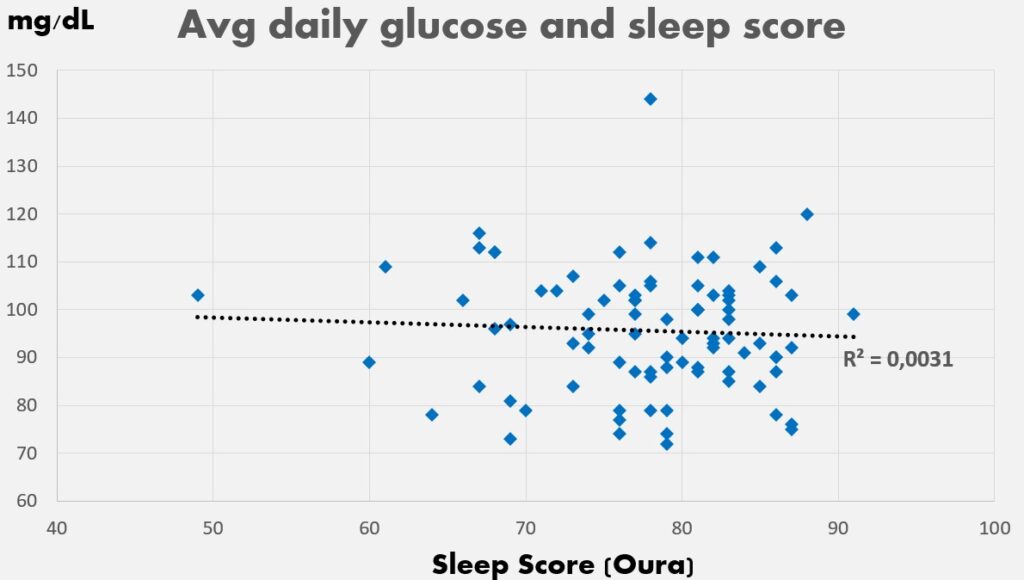
Surprisingly, there was no correlation between average daily glucose level and sleep score.
How is that possible? The fact is that many other factors affect daily glucose levels like diet, stress, exercise, sauna, etc. Another thing to consider is that there might be accuracy differences between glucose sensors and Oura itself isn’t 100% accurate.
This finding does not mean that poor sleep won’t raise glucose levels, but the effect isn’t strong enough to be visible with dozens of other factors.
I compared all the possible Oura metrics to Veri’s metrics without significant correlations, except one. The weak unexpected correlation was found here:
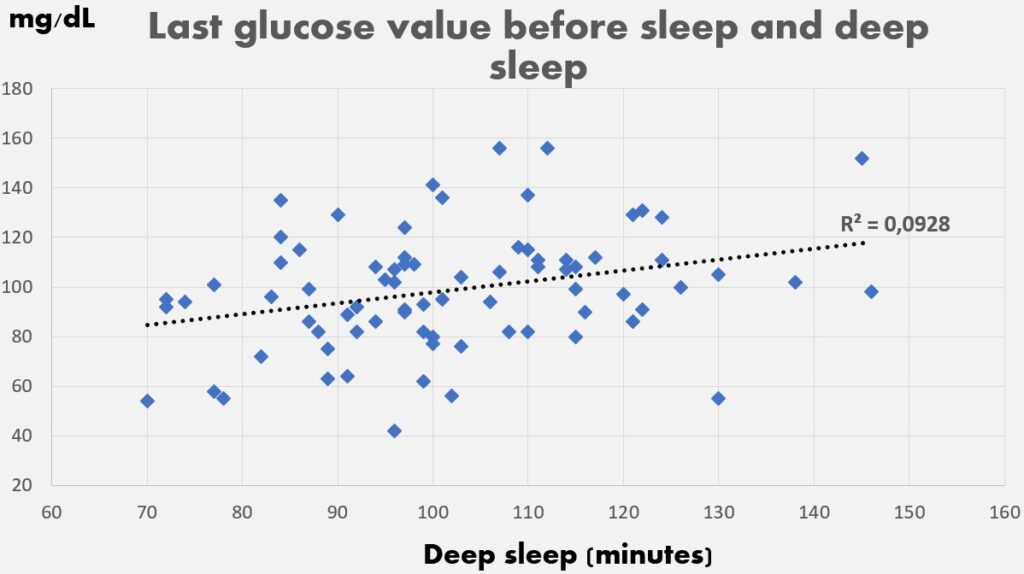
Higher glucose value before sleep indicates more deep sleep at night. This is surprising as studies have shown the opposite; a high-carb diet has been shown to reduce deep sleep and increase REM sleep [11]. That said, a high-carb diet helps fall asleep faster [12].
As deep sleep happens the first third of the night [13], in some way, it makes sense to get it more when you fall asleep faster.
We also have to consider Oura’s accuracy to detect deep sleep.
In conclusion, this is an interesting finding, but I’m not going to raise my glucose before bed to get more deep sleep.
Comparing meal scores, especially from morning and lunch, could give us more insights.
To make this accurate analysis, we have to take other factors away, meaning; no exercise, sauna, other foods before (that day) or after (2h 30min) when we analyze that particular food item.
I choose to compare meal score & total sleep time:
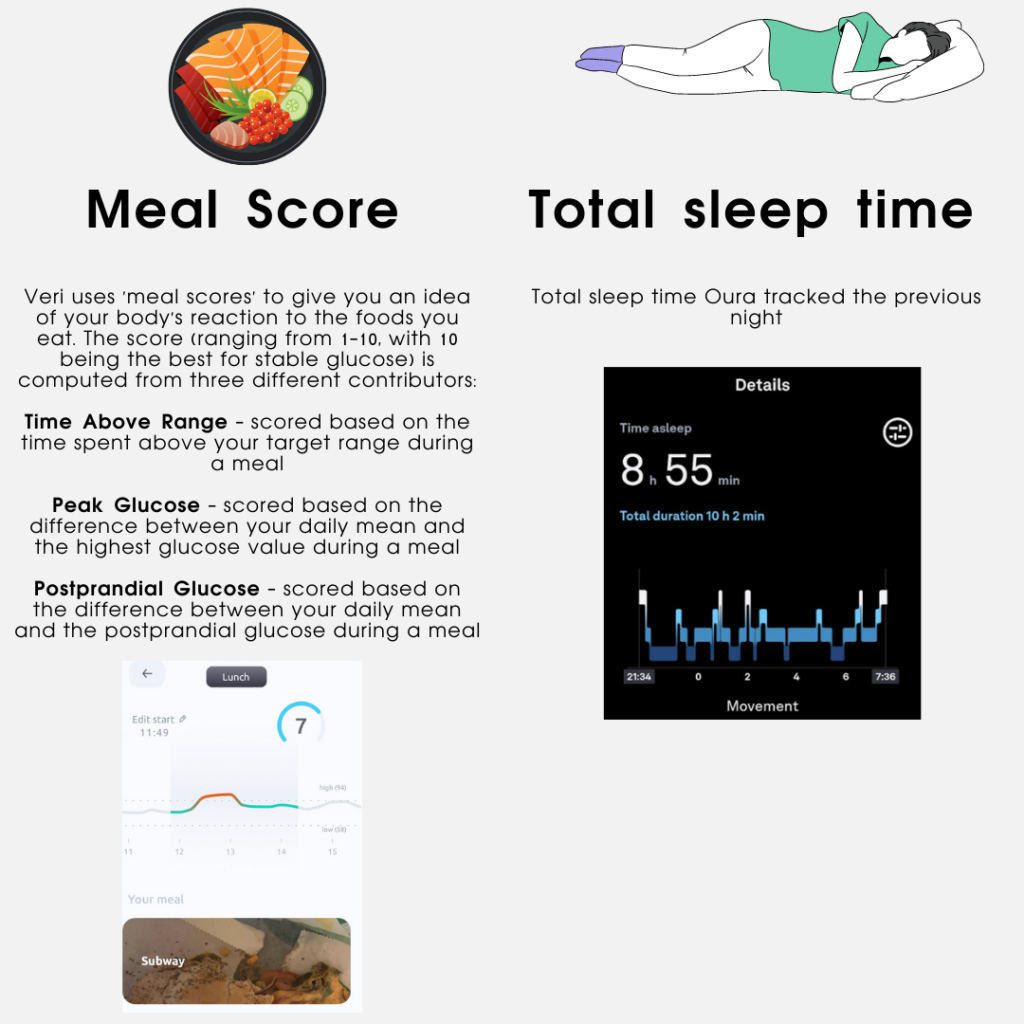
There were 3 food items that I included in the analysis. Data size was small as there’s variety in my breakfast (if I even eat breakfast), and most of the days had to be excluded due to other factors.
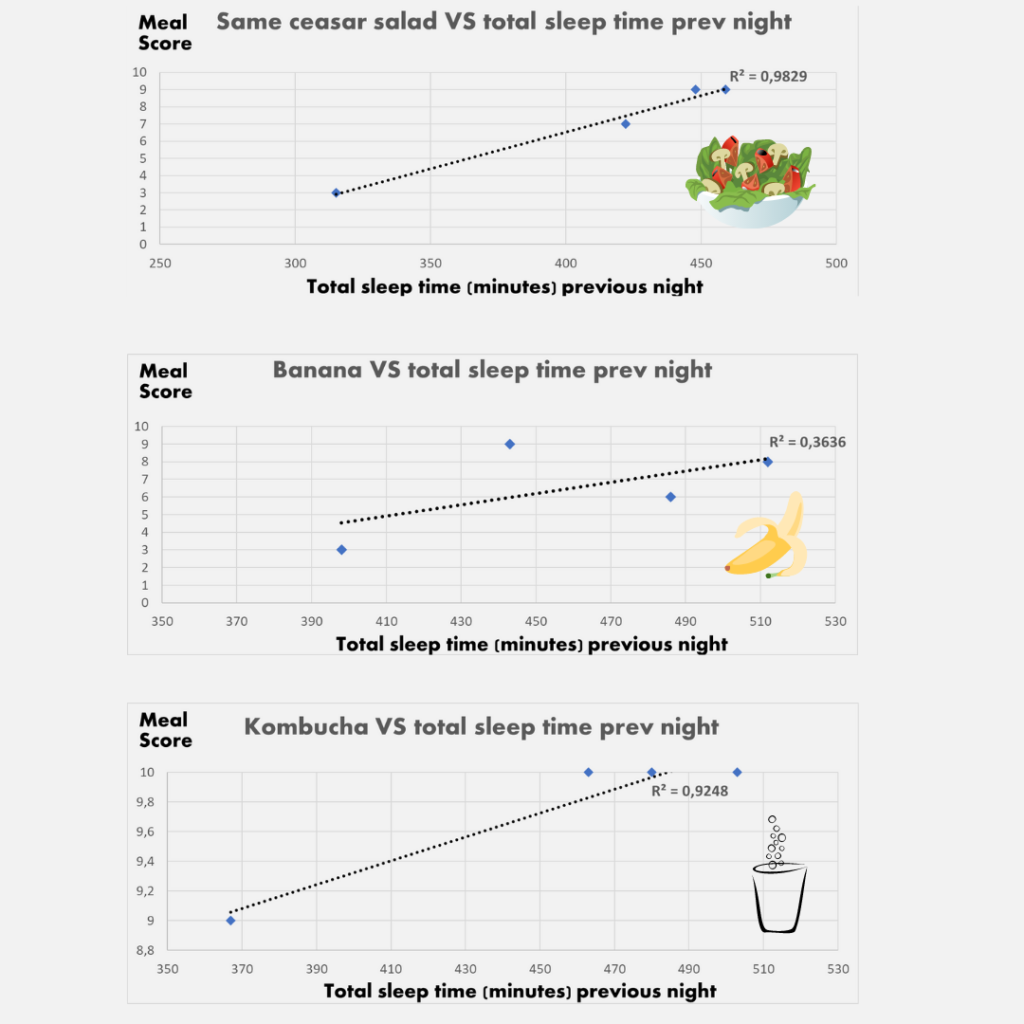
We can see in all food items that sleeping under 400 minutes brought the worst meal scores.
The most drastic example is caesar salad with a meal score of 3. That night, I only slept 315 minutes (5 hours 15 minutes), according to Oura.
I’m planning to analyze this with more data in 2022.
4. Stress and blood sugar levels
What kind of connection do stress and blood sugar has?
Both long-term stress and acute stress increase glucose levels [13] [14].
I have noticed small increases in glucose levels when I have stress at work. However, I want to focus here on public speaking. I’m part of the toastmaster organization, where we practice improv and scripted speeches in front of an audience.
First time on stage, and I couldn’t believe my glucose numbers:
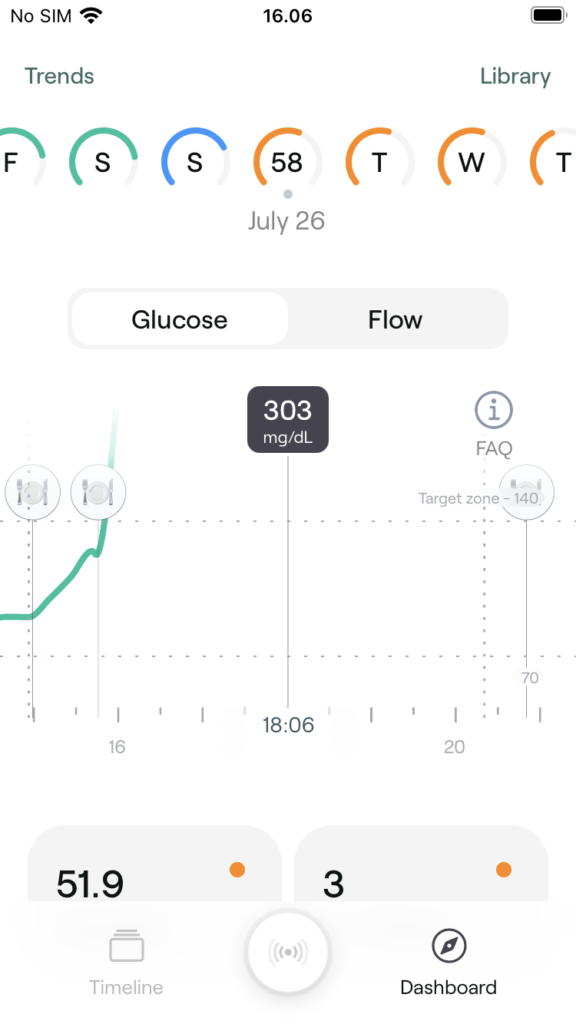
The number was so high that the graph couldn’t draw the end point, reaching a little bit over 300 mg/dL. What makes it crazier, it took 14 hours to get back on normal levels:

When you google glucose over 300, the first result is following text:

Sure, being on the stage was stressful, but otherwise, I felt normal. It had to be a sensor malfunction, and after 14 hours, it started to work again.
I forgot this “incident” for a while, but then I encountered a video where a guy named Justin Lawler tells about his experiment tracking glucose for a long period as non-diabetic. He also had glucose levels over 300 mg/dL when giving a speech.
I see 2 possibilities for this:
1. High burst of cortisol can indeed raise glucose levels over 300 mg/dl in non-diabetics (I’m still a little bit skeptical as I didn’t find any studies on this)
2. High burst of cortisol causes false reading (similarly, C-vitamin supplementation can cause false readings [15])
I was excited to measure myself more when giving speeches to investigate this phenomenon. The next speech had the following result:
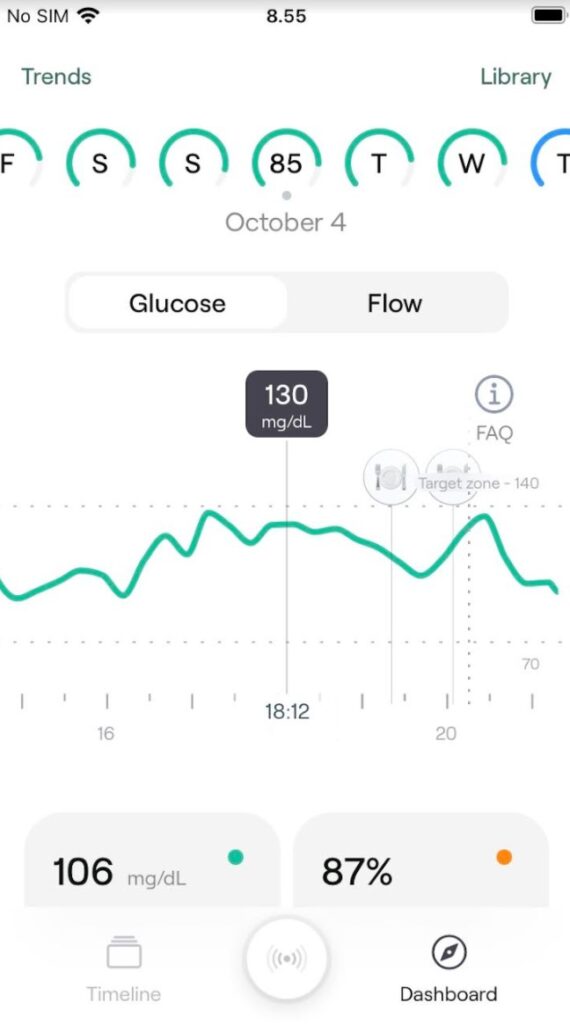
I gave a speech around 18:12. During that time, glucose was 130 mg/dL without increase. However, most likely, cortisol caused an increase from 16.0o onwards.
Based on this, I have difficulty believing the 300 mg/dL value. I expected similar numbers on the following speech, but the result was over 2x lower.
5. Exercise and blood sugar levels
Before I took deep dive into my data, I searched scientific studies on exercise and blood sugar levels.
There is seen decreased glucose in low-intensity exercise in well-trained athletes, which indicates good recovery ability [16].
In short exercise to exhaustion study, there was seen an increase in glucose levels after the workout was over [17]

In conclusion, we can expect different glucose levels during/after exercise (based on the intensity).
First, I zoomed in on the days when I went running. There was seen a typical pattern in glucose:

A slight increase in glucose levels in the first part of the run was typical, but then it decreased. After running, the baseline was lower compared to before the run.

We can see that glucose statistics are clearly better on running days. This finding got me motivated to run more in January 2022!
You might ask, what about the diet on running days? It’s not taken into consideration here, but I know as a fact that after running, I don’t eat just salad; it’s more carb-heavy.
My primary sport is calisthenics, which means different pull and push movements. From that data, I want to highlight one interesting finding:
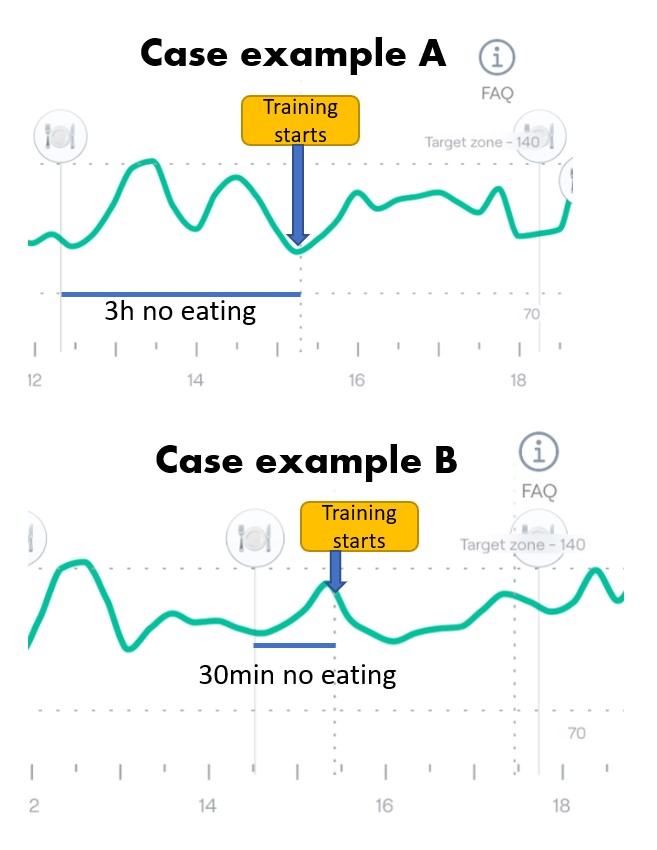
This example represents consecutive days in November, a similar type of calisthenic workout. In case example A, we can see a significant increase in glucose levels and the total opposite B.
Whys that? In A, Calisthenic training most likely causes my body to release a surge of adrenaline. For that, my body releases glucose from the liver to make sure I have enough energy available. As you notice, I haven’t eaten anything in 3 hours.
In B, however, I ate snacks, so glucose was already flowing through my veins, thus not necessary to release more from the liver.
Both of these are normal healthy reactions in the body. That said, you don’t want glucose spiking too much or a decrease in hypoglycemic levels.
A pre-workout snack is a good idea if you want to exercise hard.
I used to eat snacks always before a workout, but now I have transformed more towards no foods 2-3 hours before training and sometimes even fasted training sessions.
6. Sauna and blood sugar levels
I couldn’t leave the sauna out of this post as a Finn.
What happens in the sauna? You sweat, your heart rate increases, and it will dehydrate you if you stay long enough.
Dehydration itself can cause high blood sugar [18], so I also expect an increase in my data (I prefer at least 10-minute sauna sessions).
It seems that the short-term effect is a spike in blood glucose, but there might be glucose-related health benefits in the long term with frequent Sauna use [19].
Before looking at the data, it’s important to point out that the freestyle libre sensor’s operating temperature is 45 Celsius (113 F), far away from the sauna’s temperature. This can cause inaccurate readings.
Out of 100 days, there were 15 days in the sauna. This was a typical glucose pattern with sauna:

At first, there was a decrease in blood glucose and then a sharp increase over the previous baseline. Average increase from starting point to highest point (spike) was 24,75 mg/dL (n=15).
There was no significant difference between those data groups; average 24 hours glucose was 1,1 mg/dL higher in the days with sauna.
To see the glucose-related long-term health benefits of a sauna, you probably need to use it frequently. However, in my case, the 15 days in a sauna are not in the same period.
Hopefully, in the future, I will have my own sauna, which I can use whenever I want, then it would be an interesting experiment!
7. Mood and blood sugar levels
We have to include the psychological aspects when talking about blood sugar. It turns out that depression is more prevalent in diabetics [20], but non-diabetics also suffer more mental disorders when the diet is sugar-heavy [21]. In both examples, there are significant fluctuations in glucose levels.
What about my data? As you might know, I track my daily happiness level with an app called Daylio.
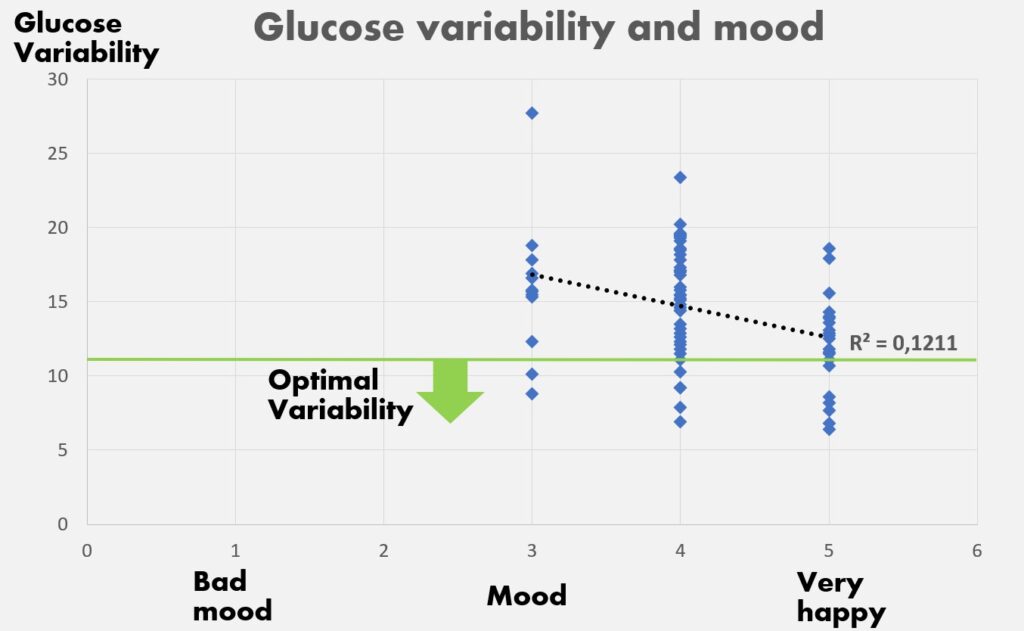
It seems that there’s a higher chance of me having a great mood when glucose variability is low, meaning blood sugar ups and downs are moderate. This is an important point to acknowledge. If you or I have a bad mood, it might be useful to look back at what we have eaten in the past 12 hours.
8. Perfect day with stable blood sugar levels
Is it possible to enjoy your life with good tasty foods and still get excellent scores from Veri? Or do you have to fast almost the whole day and eat just a few lettuces to achieve that?
The good news is that both scenarios can give you good scores. I will provide an example of a day where I enjoyed the food without crashing my scores.
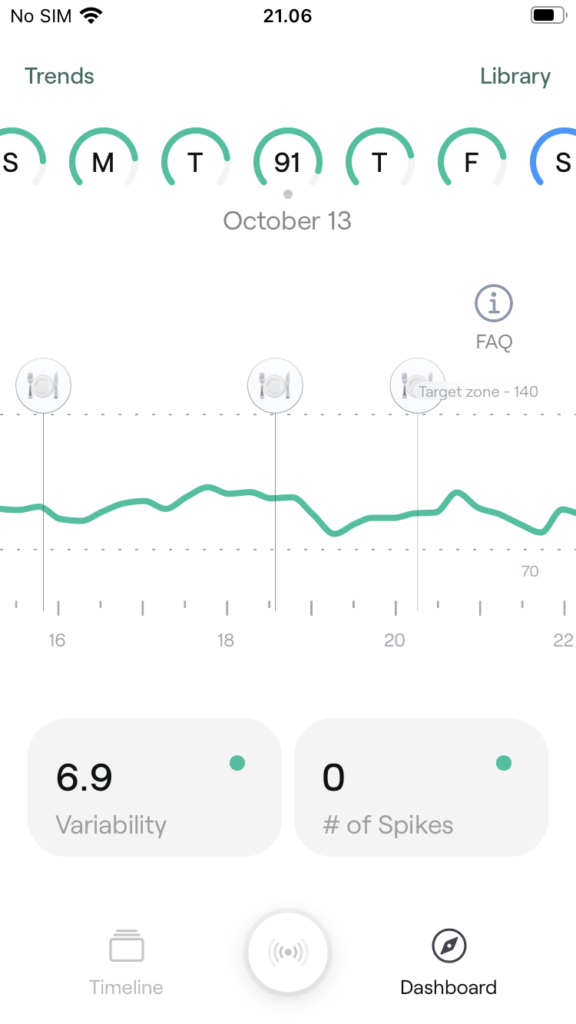
The aim is to have variability under 11, so 6.9 is one of my best scores, and that day I didn’t even have a single spike.

Average glucose ended up being 84 mg/dl, which is optimal. What did I eat this day?
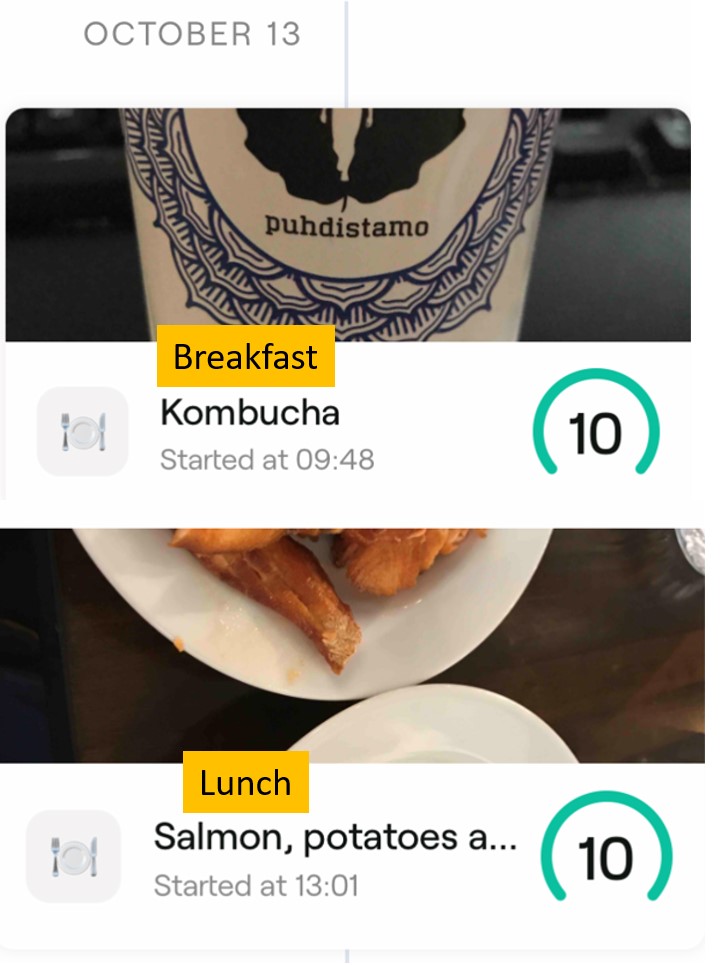
For the morning, I drank kombucha (0,377 liters / 13 oz). That contains around 20 grams of sugar.
For lunch, I had salmon, potatoes, and vegetables (Potatoes do not raise my glucose levels as rice or pasta do).
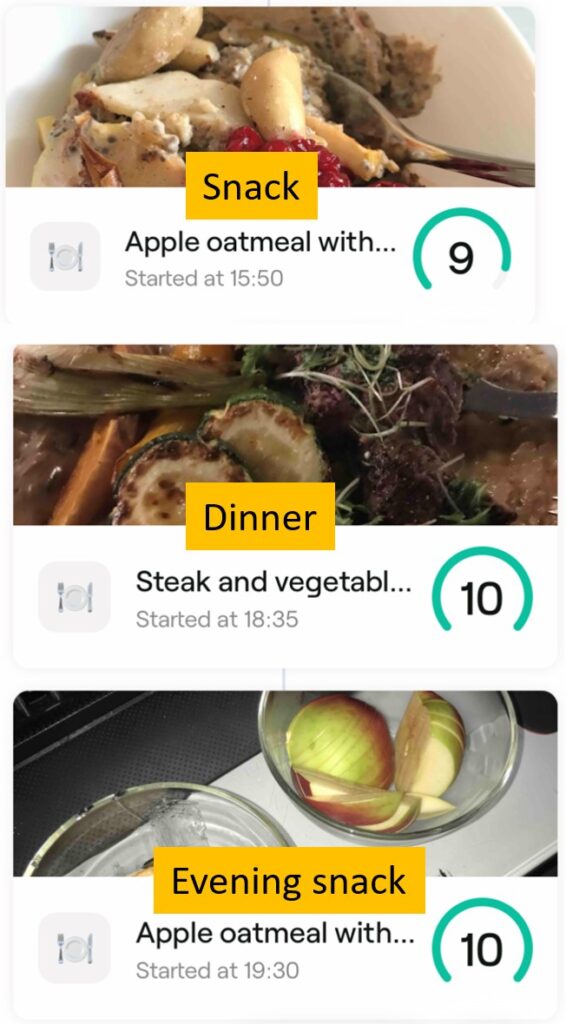
Then for a snack, tasty apple oatmeal (created from coconut milk, oat, apple, and stevia as a sweetener).
For dinner, steak and vegetables, low carbs there. And for an evening snack, again tasty apple oatmeal with extra apple.
I would categorize this as a “perfect day with glucose levels – but still pampering the taste buds.”
What helped to achieve excellent scores was the activity level for the day:
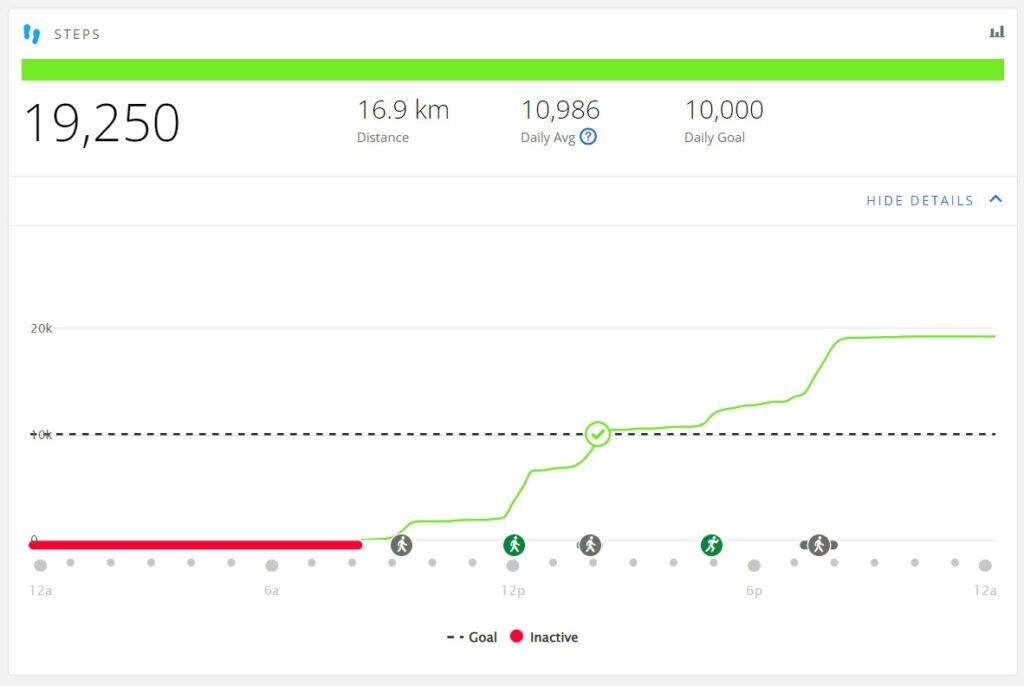
There were 5 walks throughout the day, racking up a total of 19 250 steps. This helps to stabilize glucose levels, especially after eating.
9. What happened to my glucose in November, and is CGM accurate?
In November, the average glucose level increase was so significant that I need to discuss it here before concluding this post.

There could be many reasons for that; stress, sleeping difficulties, flu, or sensor. Oura nor Garmin didn’t reveal anything special in November.
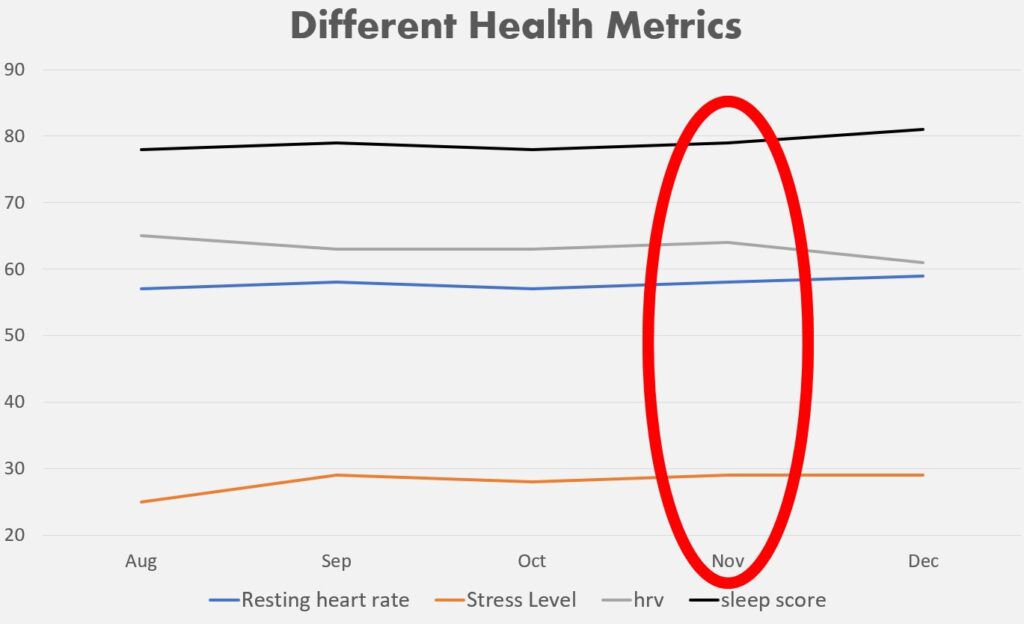
What about diet? Was there more junk food and candy compared to other months? Not really; there were 2 proper cheat days in 2 weeks and a few random occasions with not-so-healthy snacks. In summer there was much more unhealthy eating.
I started to suspect that November sensor might give too high values. I wanted to validate CGM results against laboratory blood tests, so I took fasting glucose and HbA1c.
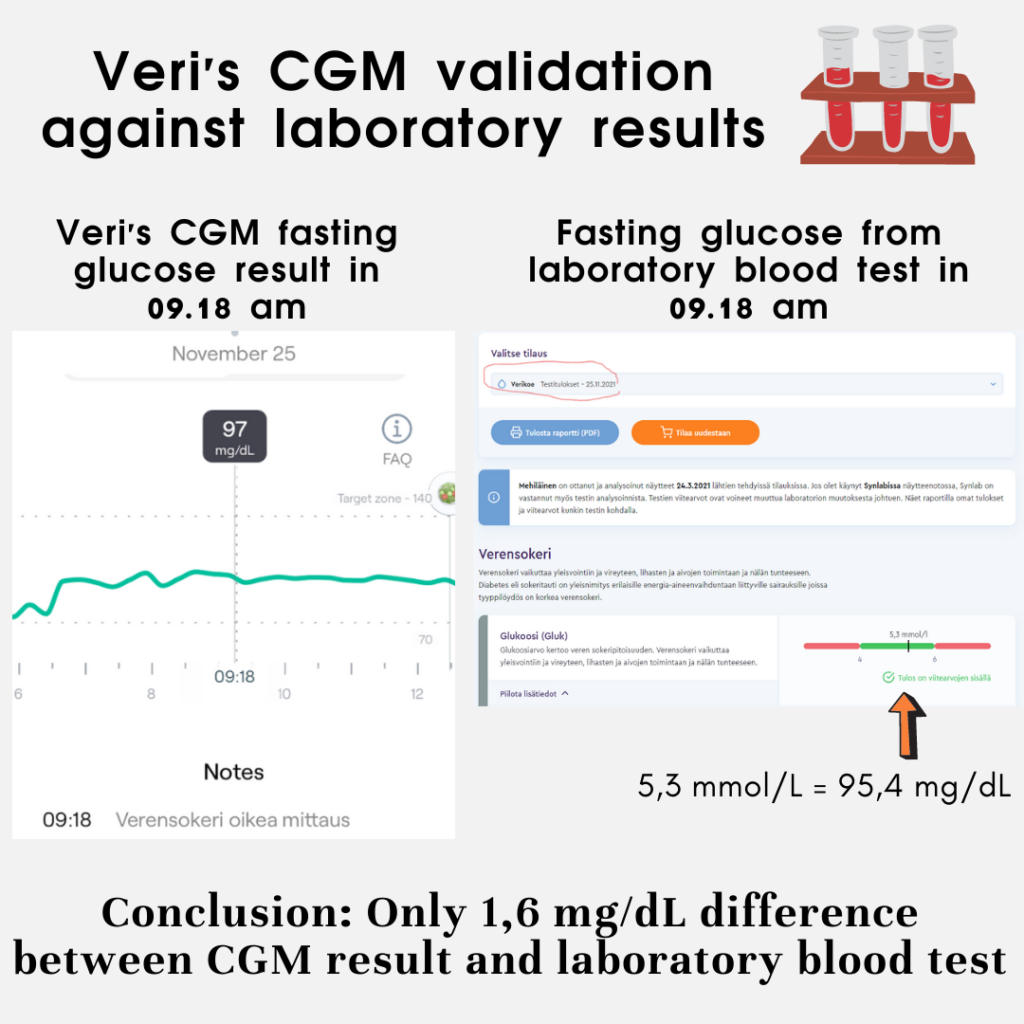
So, there’s good news and bad news. The good news is that Veri (using freestyle libre sensor) is accurate, and the bad news is that I’m not anymore in the optimal zone for fasting glucose.
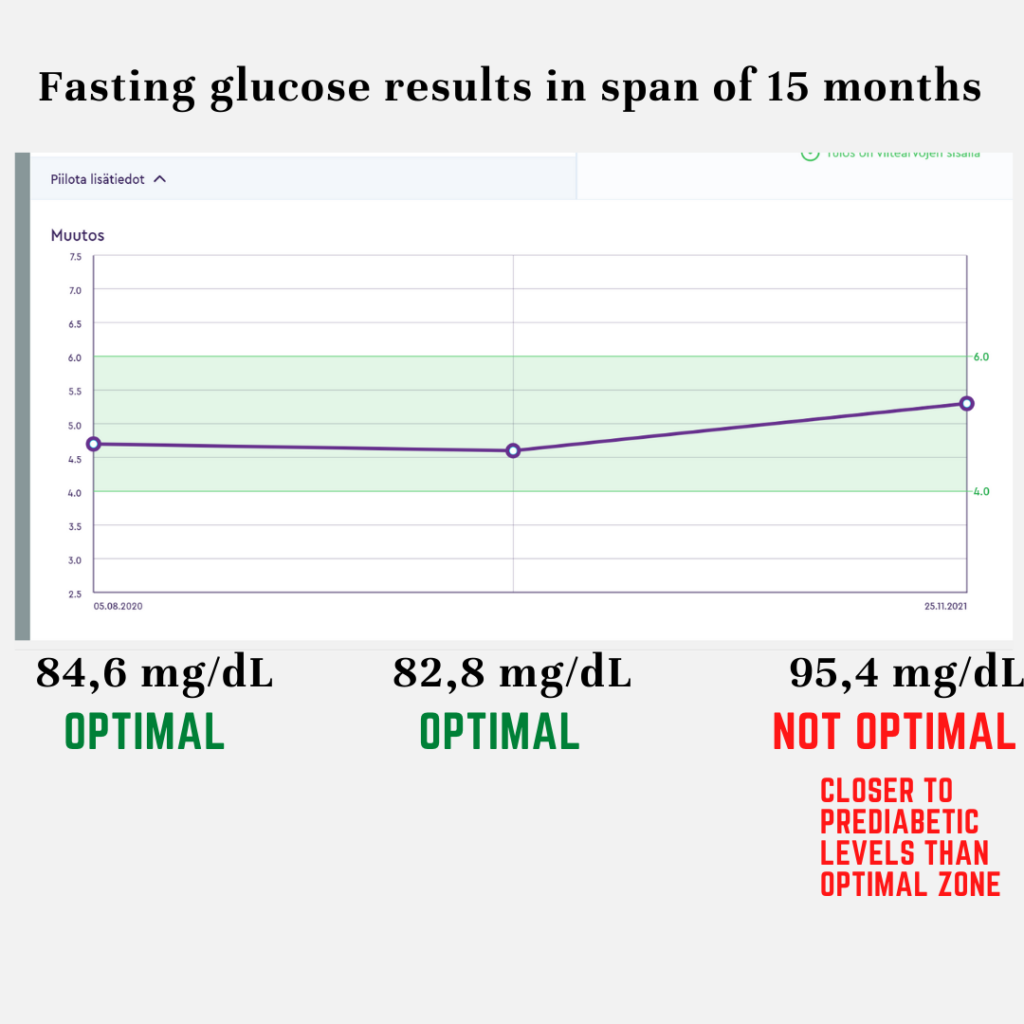
HbA1C gave me 36mmol/l, which is equal to 5,4%. This is my first time doing HbA1C, so I don’t have value to compare.

One might ask: your results are inside the “official green zone” what’s the fuss about? I see it like this:
1. Longevity is my goal. Thus, I want to have optimal values in one of the essential health metrics; Glucose.
2. Last fasting glucose result gave me a higher number than an average male has in my age group (around 2 mg/dL more)
3. Type 2 diabetes is present in my family, and I have genetic risk factors
4. If my glucose levels increase in percentage is the same as last time, I would be categorized as prediabetic
5. Previously, I have seen myself immune to the harmful effects of junk food as I don’t really gain weight. This is a good wakeup call to focus more on a healthy diet
Without Veri, I wouldn’t know that there’s significant variability in my 24h glucose. I see myself as a case example of how CGM can thrive you towards better metabolic health.
10. Summary (Key takeaways)
What are the key takeaways from 100 hundred days of glucose data? Its been a fascinating ride to understand metabolic health better, and that ride will continue in the future also.
First, I will discuss key takeaways and then focus areas in 2022.
Key takeaways
1. To get a complete understanding of metabolic health, routine blood tests are not enough. Continuous glucose monitoring is the way to get 24h view of glucose levels.
2. There can be significant changes in average glucose levels, even in a span of twelve months.
3. Surprisingly, finding correlations between sleep statistics and glucose levels wasn’t straightforward. Reason for this most likely is the number of factors influencing glucose levels. However, glucose levels in meal comparison showed a correlation between sleep time in a small sample size.
4. Public speaking can spike CGM reading over 300 mg/dL. I want to understand this better; Is it an accurate number, and how can it be so high?
5. Running is an excellent way to decrease glucose levels.
6. Steady glucose variability correlates with a happy mind. The big question is, is it an unhappy mind that causes glucose variability or high glucose variability that causes an unhappy mind.
7. The sensor Veri uses (freestyle libre) is accurate, with only a 1,6 mg/dL difference compared to the actual fasting glucose test.
8. In November, my glucose values were out of optimal range, good wake up call to focus more on metabolic health.
Focus in 2022
1. Improve glucose statistics back to an optimal level
2. Do an official glucose tolerance test
3. Experiment with different ways to reduce glucose spike after the meal
I will write an update in 2022 about my glucose experiments.
Thank you for reading!
Ps. You can use my referral link to get 30 dollars off from your first Veri sensor order or use code VSM-ILMOST


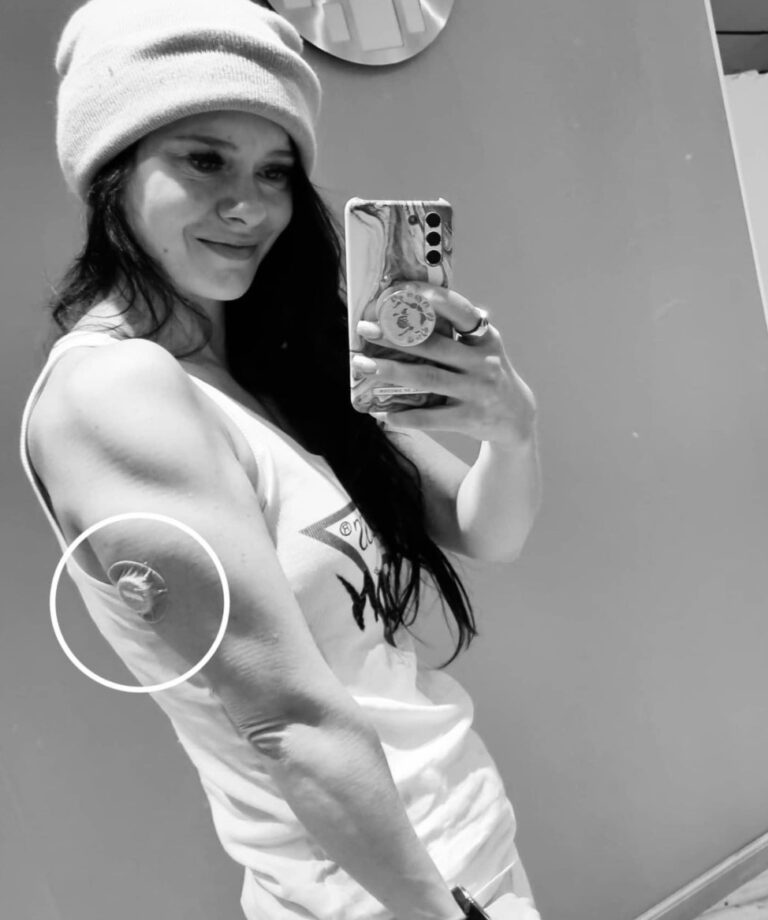
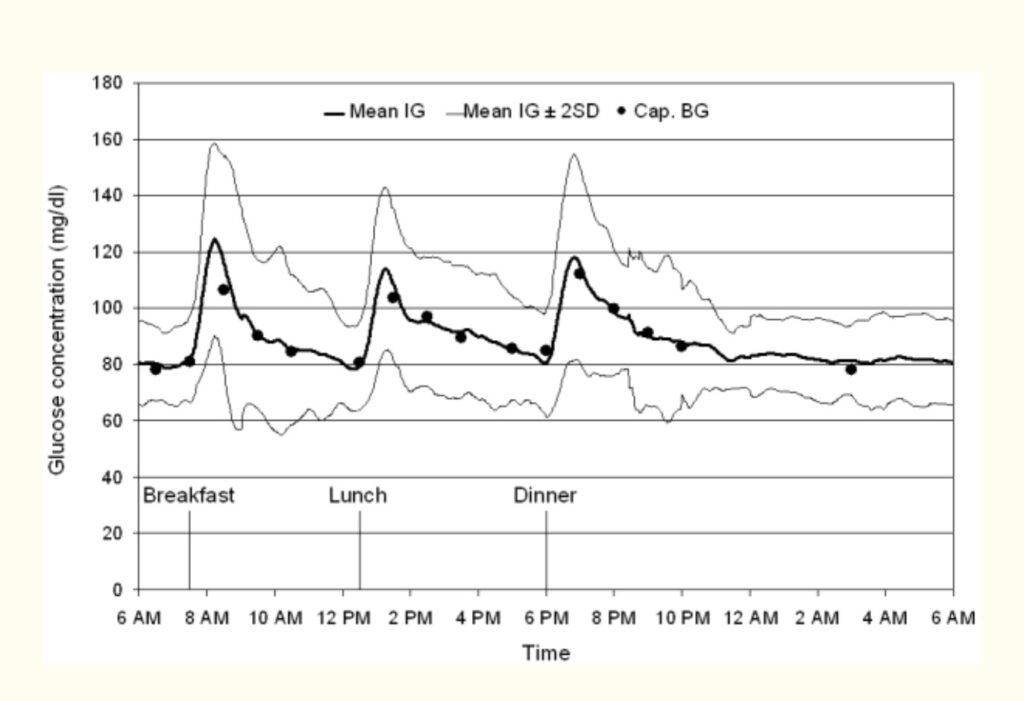
This Post Has 14 Comments
Hi Ilmo,
Just wanted to let you know that I really appreciate your posts. There is so much undocumented talk within the biohacking and dieting communities, and you stand apart with your thorough analytical approach. Keep up the good work!
Hi Rasmus
Thank you for your comments. Feedback like this is really motivating
br, Ilmo
Great article thank you!
“Surprisingly, there was no correlation between average daily glucose level and sleep score”
I suppose this is due to that Oura is not polysomnography which is used in studies, and Oura, like any other sleep wearable, is not so good at detecting sleep stages as polysomnography and can mistake much in sleep stage detection which you take to compare with glucose levels. Oura is not good for sleep stage detection even compared to simple EEG – https://www.youtube.com/watch?v=MlIbhv2cWoE
Same with “Last glucose value before sleep and deep sleep”. You compare glucose to messy sleep stage data.
I see that you have a lot of data points of glucose level before sleep at the level lower than lower healthy level – 75 mg/DL. Maybe you have a bad deep stage due to hypoglycemia which rise cortisol and harms the deep stages?
“Sure, being on the stage was stressful, but otherwise, I felt normal. It had to be a sensor malfunction, and after 14 hours, it started to work again. ”
It is a pity that you didn’t compare to glucose level data from Veri with simple strips glucometer.
Maybe you get a higher glucose level in November due to a change in environment – lower ambient temperature, less sunlight (less vitamin D)?
Always good feedback from you Oleg, really appreciated.
You are correct about Oura, I trust total sleep time somewhat but other than that can’t put too much emphasis. Now writing this, I realized that I should have actually just looked at total sleep time in correlation analysis, not sleep score.
Very interesting point about low glucose value before sleep – I need to analyze that, and maybe even update the post. Thanks!
You might be right regarding November – Fast googling found the following sentence from one study: “It has been shown that the population average blood glucose level of diabetes patients shows seasonal variation, with higher levels in the winter than summer.” Will research this also more
br, Ilmo
kiva kuulla että olet testaillut verensokeria. Minua kiinnostaa verensokerin dramaattinen lasku pitkäkestoisessa airoobisessa harjoituksessa 2-4 h jolloin kehon omat lihaksissa ja maksassa olevat glukoosit on käytetty, miten sitten tankataan ja mitä tankataan. testiti odottavat kevään ja kesän pitkiä pyöräretkiä, jolloin voi rasittaa kehoa pitkaan totaalisesti uupumatta. kari korpiola
Nyt löytyy kokemusta vain 1h juoksulenkeistä verensokerimittarin kanssa mutta voisin itsekkin kokeilla keväällä/kesällä 20km-30km että miltä data näyttää. Hyvä idea!
The correlation between previous night’s sleep and next day’s BG impact from meals is really interesting.
I have T1 diabetes and have also found no correlation between sleep and average blood glucose, but I haven’t checked for impact on individual meals. I’ll have to test it out myself.
Thank you for your comprehensive analysis. You have grabbed a very interesting topic.
May I throw in a research idea in between?
I have only had Oura for a few months, but I have noticed that a tablespoon of honey shortly before going to bed gives me better sleep results. However, my patience is not enough to follow this leed as closely as your follow-ups are. I haven’t been looking for any research results to confirm my honey theory either, but if you’re looking for more test ideas, I’d really appreciate it if you took up this topic.
Thank you for your comments
I have heard about honey before bed but haven’t really tried it. But I could see it work and I like honey so I’ll give it a try.
There’s actually one interesting double-blind study ongoing regarding honey to improve sleep quality https://clinicaltrials.gov/ct2/show/NCT04207281
Very interesting again Ilmo!
I’m also curious to hear about:
– Was there a surprising fooditem that spiked your glucose? (Like with Rhonda Patrick’s white rice example – if I’m not mistaken)
– Do you know if there’s a long term benefit for a lower glucose score overall?
– Do you know about studies who look at the negative effect of glucose spikes (after eating)? Is this something which is more important compared to a lower glucose score overall
– Have you also done a longer fast? (3 days?) When I did that, my values dropped below ‘good’ levels 😅
– Will you try Berberine for your next CGM experiment? It should work on lowering your glucose level (Huberman Lab: Effects of Fasting & Time Restricted Eating on Fat Loss & Health | Episode 41)
Cheers,
Tim
Thanks Tim
Fresh orange juice spiked like crazy, it’s not surprised as there are like 10 squeezed oranges to get 0,5litres of juice. I’m not drinking that anymore lol (even though its organic).
According to studies, there’s an optimal range where mortality risk is lowest (obviously too low is not good either).
Major spikes after eating causes overproduction of superoxide, which can lead to endothelial damage. So you want to reduce the (significant) spikes so oxidative stress can be diminished. I think the newest science is now actually leaning more towards the importance of glucose spike management, than the overall glucose average.
I have only done 24h, I’m such an exercise junkie that I would have hard time fasting 3 days without exercising 😀
Yes, Berberine is definitely on my radar. I have a feeling that post-lunch walking is better than berberine, apple cider vinegar etc. but will need to test it multiple times.
br, Ilmo
So you are a man or woman?
Man
The woman in the picture is my girlfriend
Where there is a will, there is a way.